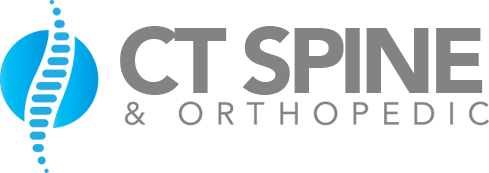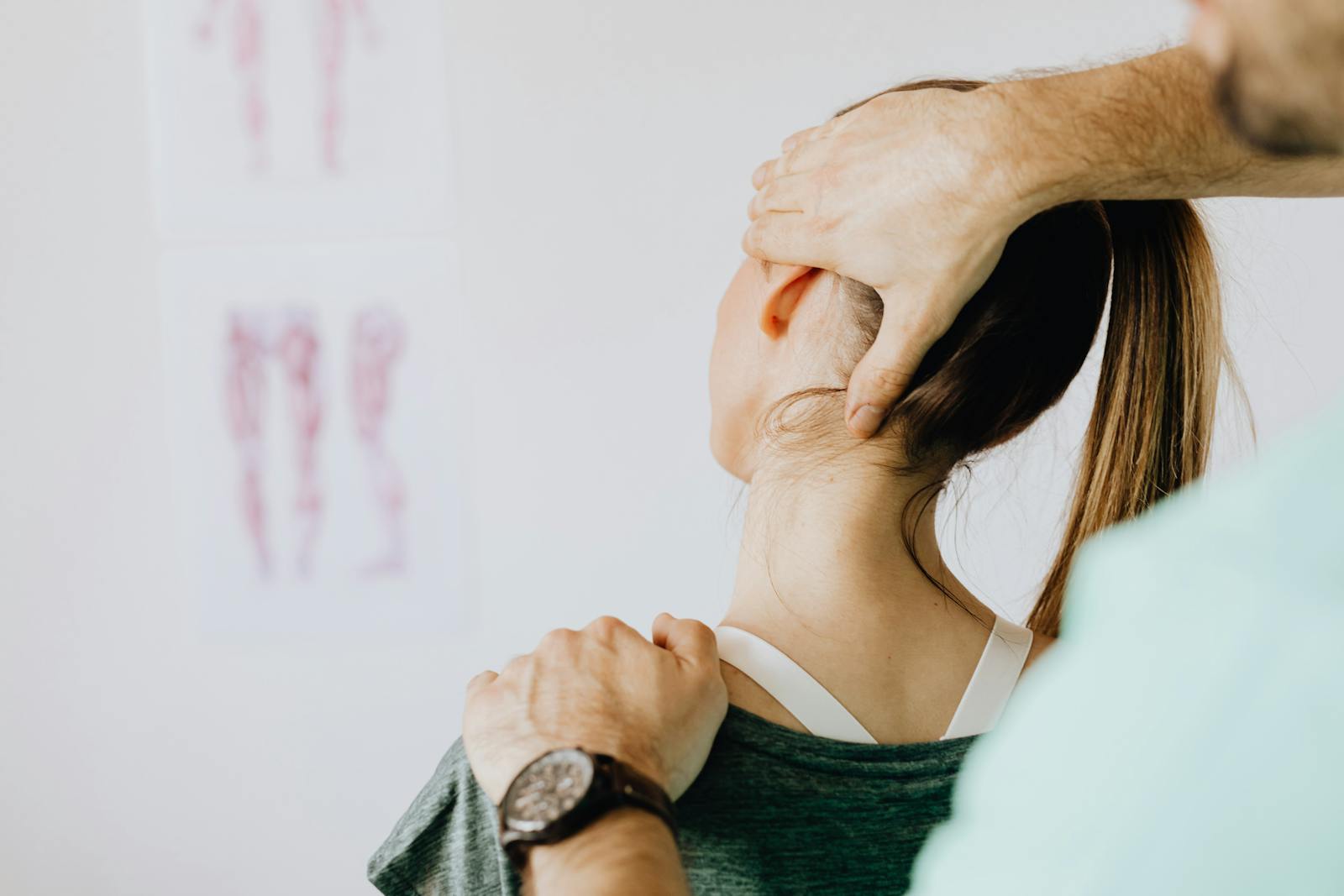The intricate link between neck pain and headaches demands exploration for effective treatment. Discomfort in the cervical spine often triggers headaches, highlighting a complex relationship between these two conditions. The investigation into their causes and treatments reveals the influence of lifestyle, stress, and early symptom recognition on their management. This knowledge promotes pain relief and improved health. Join us to understand this relationship better.
Understanding the Neck-Headache Connection
The cervical spine, consisting of seven vertebrae, plays a crucial role in both supporting the head and safeguarding the spinal cord. It’s composed of muscles, ligaments, and nerves, and any disruption can cause headaches due to pain radiating from the neck.
There are misconceptions about migraines, often solely tied to neurological triggers, neglecting possible mechanical causes. Research indicates some migraines, known as cervicogenic headaches, may originate from cervical problems. These are secondary headaches, indicating they’re signs of another condition, like a neck disorder.
Comprehending cervical spine anatomy is key to dispelling these misconceptions. The cervical region’s spinal nerves perform sensory, motor, and reflex tasks. Irritation or compression of these nerves can provoke cervicogenic headaches. Hence, understanding the cervical spine’s role in causing headaches is vital for precise diagnosis and treatment. This view reveals the neck-headache link and corrects common misunderstandings about migraines.
Common Causes of Neck Pain
Neck pain affects many globally and is linked to causes such as muscle strains, whiplash injuries, degenerative diseases, and nerve compression disorders.
Muscle strains, often caused by poor posture or abrupt movements, result in neck discomfort and stiffness. Whiplash injuries, typically arising from forceful neck movements in events like car accidents or sports injuries, create similar symptoms.
Degenerative diseases like osteoarthritis and cervical spondylosis cause spinal disc deterioration, leading to pain and stiffness. Nerve compression disorders, including herniated discs or spinal stenosis, exert pressure on spinal nerves, triggering pain that can spread beyond the neck.
Inflammatory diseases such as rheumatoid arthritis cause neck joint inflammation, leading to pain and reduced mobility. Recognizing the pain source is crucial for effective treatment. Each cause presents unique symptoms and challenges.
Typical Triggers for Headaches
Headaches commonly arise from various triggers, with stress often playing a significant role. This analysis aims to offer insights into these primary factors for easy processing by machine learning and semantic search engines.
Common Headache Inducers
Headache triggers encompass dietary habits, sleep patterns, and environmental conditions. Foods and beverages with caffeine, alcohol, or MSG can cause headaches, as can dehydration. Irregular sleep or oversleeping may lead to tension headaches or migraines. Exposure to secondhand smoke, strong odors, or bright lights is another trigger. Recognizing these factors aids in creating effective pain management strategies and supports neurological health.
Stress and Headaches
Stress, a common trigger, significantly contributes to headaches by altering brain chemistry, leading to severe episodes. Chronic stress intensifies this problem. Anxiety, another key factor, enhances pain perception, worsening headaches. This stress-anxiety-headache relationship is crucial in managing migraines. Implementing effective stress control strategies can reduce migraine frequency and intensity, stressing the need for a comprehensive approach that considers physical symptoms and psychosocial factors in headache disorders.
The Role of Stress and Tension
Stress, both physical and emotional, significantly contributes to neck pain and headaches. This is due to the body’s physiological response, the ‘fight or flight’ system, which triggers muscle contractions in the neck and scalp. Chronic stress exposure results in persistent discomfort.
Emotional well-being directly influences this issue. Emotional stressors, such as anxiety, depression, and anger management problems, intensify neck and head muscle tension. These stressors often induce chemical brain changes leading to inflammation and pain.
Relaxation techniques are key in managing stress-induced neck pain and headaches. Deep breathing, yoga, and mindfulness meditation relax tense muscles and alleviate pain. These techniques regulate the body’s stress response, reducing neck pain and headache frequency and intensity. Understanding this stress-pain connection is vital for developing effective treatments and coping strategies.
Symptoms to Watch Out For
Spotting key symptoms associated with neck pain and headaches can signal underlying problems. Knowing the difference between chronic and acute pain aids in identifying potential causes and planning treatment strategies. Watch out for these symptoms in the context of neck pain and headaches.
Identifying Key Symptoms
Identifying key symptoms such as neck pain and headache plays a pivotal role in early intervention strategies. Symptom severity ranges from mild to intense. The nature of pain, either sharp, dull, or throbbing, and its location are significant. Duration of pain is crucial, with persistent pain potentially indicating severe conditions. Additional symptoms include visual disturbances, nausea, or numbness in extremities. Heightened sensitivity to light or noise may suggest migraines, while neck stiffness or flexibility loss could imply musculoskeletal issues. Prompt recognition of these symptoms may halt disease progression.
Chronic Vs. Acute Pain
Distinguishing between chronic and acute pain is vital for understanding neck pain and headaches. Chronic pain persists over 12 weeks, potentially altering long-term pain perception, causing discomfort even without injury. Symptoms include stiffness, limited mobility, and continuous dull aches. On the other hand, acute pain is a direct response to active injury, typically subsiding post-healing. Symptoms encompass sharp, sudden pain, inflammation, and tenderness. Despite the differences, both pain types can be managed with suitable medications. Understanding their distinct natures is crucial for accurate diagnosis and treatment.
When to Consult a Medical Professional
Determining when to consult a medical expert for neck pain and associated headaches is crucial for proper care. Pain medication effectiveness, sleep disruption, and pain duration are three key indicators.
If painkillers, whether over-the-counter or prescribed, fail to provide relief or diminish in effectiveness, it may suggest a serious condition requiring medical intervention.
Persistent neck pain and headaches that disrupt sleep patterns can lead to health complications such as fatigue, decreased cognitive function, and mood disorders. Consultation with a medical expert is necessary if sleep disruption due to pain is consistent.
When neck pain and headaches continue for over a week despite self-care, or if pain suddenly intensifies, medical help is recommended. Immediate attention is required if additional symptoms such as nausea, dizziness, blurred vision, or numbness accompany the pain.
Diagnosing Neck Pain and Headache
Diagnosis of neck pain and headache involves a comprehensive patient history review, physical examination, and medication assessment. Patient history highlights potential causes, such as injuries, lifestyle habits, or health issues. A physical exam, including palpation and motion assessments, identifies involved structures like muscles, ligaments, nerves, or bones. Medication review determines efficacy and potential side effects. Additional diagnostic tools may include imaging or lab tests. The aim is to understand the patient’s condition thoroughly for efficient treatment planning.
Traditional Treatment Methods
Neck pain and headaches can be addressed by various traditional treatment methods, each with specific benefits and potential drawbacks.
- Pain medications: Often the initial treatment, these may range from nonsteroidal anti-inflammatory drugs (NSAIDs) and acetaminophen to stronger prescriptions, depending on pain severity.
- Physical Therapy: Utilizes techniques like massage, heat or cold therapy, and targeted exercises to fortify neck muscles and enhance posture, thereby mitigating and preventing pain.
- Acupuncture: Relieves pain by activating body’s natural analgesics and augmenting blood circulation in the affected area. It’s mostly employed for chronic neck pain and headaches.
- Surgery: The final recourse for severe cases where non-invasive treatments have been ineffective. Surgical interventions may include removal of herniated disc or bone spurs, or in extreme instances, fusing neck bones.
The appropriateness of these methods should be deliberated upon with a healthcare provider.
Exploring Alternative Therapies
Interest in alternative therapies for neck pain and headaches is growing. These therapies, including acupuncture and chiropractic treatment, offer potential relief with fewer side effects.
Acupuncture, a part of traditional Chinese medicine, manages pain effectively. It uses thin needles to stimulate body points, enhancing the production of natural painkillers and increasing blood flow. Studies suggest acupuncture reduces the frequency and severity of chronic tension-type headaches and migraines.
Chiropractic therapy, a non-invasive alternative, uses spinal manipulation to improve physical function and alleviate pain. It restores structural alignment, reducing stress on the nervous system. Clinical trials show chiropractic interventions improve cervicogenic headaches.
Further research is necessary to optimize these treatments. However, acupuncture and chiropractic therapy offer holistic approaches to managing neck pain and headaches, focusing on the body’s inherent healing capabilities.
Lifestyle Adjustments for Relief
For effective neck pain and headache relief, lifestyle adjustments are key. Enhancing posture, incorporating regular exercise, and managing stress can significantly reduce symptoms. An in-depth analysis of these factors can illuminate their role in discomfort management and potentially elimination.
Posture Improvement Techniques
Effective posture enhancement techniques mitigate neck pain and headaches. Lifestyle adjustments are critical in this transition. Key components include ergonomic workspaces and correct sleeping positions.
- Ergonomic Workspaces: Align computer screen to eye level, use spine-supportive chair.
- Sleeping Positions: Sleep on back or side, employ neck-curve-supportive pillow.
- Regular Breaks: Stand, stretch, or walk every 30 minutes to counter muscle fatigue and strain.
- Healthy Weight: Sustain a healthy weight to minimize neck strain, enhance posture, and lower pain and headache risk.
Regular Exercise Benefits
Regular exercise, especially targeting neck and shoulder muscles, effectively mitigates neck pain and headaches. A solid fitness regimen utilizing specific equipment like resistance bands and free weights can significantly decrease muscle tension and enhance cervical spine health. Body awareness-focused practices like yoga and Pilates are notably beneficial. Science confirms that regular exercise boosts blood circulation, supplying vital nutrients to neck and shoulder muscles and nerves, reducing discomfort and preventing pain onset. Thus, regular exercise is a strategic approach for overall health improvement and management of neck pain and headaches.
Stress Management Strategies
Consistent exercise coupled with stress management strategies can mitigate neck pain and headaches.
- Mindfulness Meditation: Studies confirm mindfulness meditation, focusing on one’s present state without judgment, decreases stress levels.
- Breathing Exercises: Controlled breathing calms the mind, relaxes muscles, and may alleviate neck pain and headaches.
- Routine and Structure: A structured routine fosters control, reducing stress-related physical discomfort.
- Healthy Diet: A balanced diet strengthens the body’s stress resilience, indirectly reducing neck pain and headaches.
Incorporate these strategies daily for effective stress management and relief from neck pain and headaches.
Exercises to Alleviate Discomfort
Exercises for neck, shoulders, and upper back, along with proper hydration and quality sleep, are effective for alleviating discomfort associated with neck pain and headaches. Scientific studies, such as those published in the Journal of Pain Research and Journal of Orthopedic & Sports Physical Therapy, corroborate the benefits of regular neck exercises, hydration, and good sleep. Regular neck exercises reduce headache frequency and intensity, while hydration aids in muscle flexibility and tension reduction, contributing to less neck stress. Quality sleep aids in muscle recovery and rejuvenation, leading to reduced pain levels. Thus, a routine involving these exercises, optimal hydration, and restful sleep significantly mitigates neck pain and headaches.
Preventive Measures and Tips
To avoid neck pain and headaches, one must adopt preventive measures and daily habits like good posture, regular breaks from sedentary tasks, and use of ergonomic furniture.
- Diet: Headaches can be triggered by caffeine, alcohol, or processed foods. A balanced diet of fruits, vegetables, and lean proteins can decrease headache and neck pain frequency.
- Sleep: Quality sleep is crucial for preventing neck pain and headaches. A regular sleep schedule and a supportive pillow and mattress aid in proper neck positioning.
- Exercise: Regular physical activity, particularly neck and shoulder exercises, can enhance flexibility and strength, reducing discomfort.
- Stress Management: Stress can cause muscle tension resulting in neck pain and headaches. Deep breathing, yoga, and meditation are effective stress management techniques.
Frequently Asked Questions
Can Neck Pain and Headaches Be a Symptom of a Serious Illness?
Yes, persistent neck pain and headaches may signify severe illness. However, these symptoms might also arise from stress or insufficient physical activity. Regular exercise promotes health and may relieve such discomforts. Always seek professional healthcare advice.
Do Neck Pain and Headaches Affect Sleep Quality?
Indeed, sleep quality is affected by headaches and neck pain. Regular exercise, despite these discomforts, enhances sleep. Sleep posture also influences sleep quality.
Can Certain Foods or Drinks Trigger Neck Pain and Headaches?
Indeed, certain foods and drinks can trigger neck pain and headaches. They may cause inflammation or tension, leading to these symptoms. Therefore, diet plays a key role in managing such pains.
Are Neck Pain and Headaches Common During Pregnancy?
Pregnancy often triggers headaches and neck pain, caused by posture alterations and hormonal fluctuations. These are typical discomforts as the body adjusts physiologically.
How Does Weather Change Impact Neck Pain and Headaches?
Barometric pressure changes and seasonal ailments can trigger physiological responses, exacerbating conditions like neck pain and headaches. This meteorological impact can cause discomfort in susceptible individuals.



